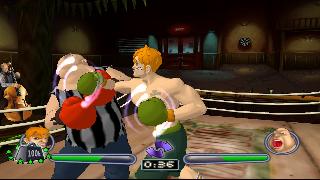
Last updated on Jan 23, 2023.Ī sprain in the wrist is an injury to its ligaments, the tough bands of fibrous tissue that connect bones to one another inside a joint.
Injury from other children should also be referred for assessment which would include a consideration of the parent’s or carers ability to safeguard their children.Medically reviewed by. Self-inflicted injury:- this is rare and the explanation of the injury should not be accepted without an assessment by Social Worker and paediatrician. It is particularly important that accurate details of any of the above should be included on a body map and should be communicated to the infant’s general practitioner, health visitor and domiciliary midwife, and should be included in the Child’s records. Birth marks may appear at birth or may appear later on. New born baby professionals should remain alert to the possibility of physical abuse even in a hospital setting. Birth injury can occur following a normal delivery or instrumental delivery, bruising could develop following birth and there could be minor bleeding into the eye. Ensure that the voice of the child is heard through both non-verbal and verbal cues. If in doubt refer to the Safeguarding Hub and ensure the child (children) are safely transported to the children’s ward of the local hospital after liaison. At all times the priority should be to ensure that any injury/condition has been medically assessed. Other children within the family need to be considered in terms of their safety. It is the responsibility of both Children’s Service and the Paediatrician to decide whether bruising is compatible with a NAI or not. Liaison between the Paediatrician and Children Service’s is essential. The Paediatric assessment may include blood tests and a skeletal survey. If there is a delay and the bruising has disappeared a referral to the Paediatrician is still required to assess for other injuries/ maltreatment or the possibility of an underlying medical condition. A careful record of the carers/parents description of events and explanation for the bruising should be made in the notes. For health staff this includes the CWILTED risk assessment. In all cases mapping, description and recording of the size, colour characteristics, site pattern and number of bruises should be made on a body map -this needs to be sent with referral to Cumbria Safeguarding Hub to be shared with the paediatrician doing the assessment Contemporaneous, comprehensive, accurate, dated timed records should be kept. Following referral to Children’s Social care the social worker must make a referral to the Paediatric Consultant on call at their local hospital and arrange a paediatric assessment at a time appropriate to the urgency of the concerns. A contact to the Cumbria Safeguarding Hub should be made the hub will transfer to the district social work team and advise the local Police. Arrange transportation via ambulance to the nearest appropriate hospital Emergency Department If the child or infant appears ill or injured (including head injuries) seek medical emergency treatment without delay. Please see Appendix: 1 Flow Chart for the Management of Actual or Suspected Bruising in Babies and Children who are not Independently Mobile Bruising on the face is the commonest site for -accidental bruising but only 6% of accidental bruising occurs on the face. Increased bruising with increased family size. Children have more bruises in the summer months. Only one in five infants who is starting to walk by holding on to furniture has bruises. Children who are mobile sustain bruises from everyday activities and accidents. Recurrent injuries or siblings having recurrent injuries. Infant displays wariness or watchfulness. Difficulty in feeding/excessive crying. signs of neglect poor hygiene, presentation or nutrition Other associated features of concern e.g. 

Associated family factors such as substance misuse, mental health problems and domestic abuse or an unrelated male in the household.Inconsistent of absent explanation from parents/carers.Admission of physical punishment by parents.

Delayed presentation in reporting injury/seeking medical advice.Other risk factors that should raise concerns are Child Protection Evidence Brusing (formerly Core Info).This is by far the commonest site of bruising in child abuse Bruising to the head including face including the mouth, ears and neck.Bruises seen away from bony prominences on soft tissue.Bruising is the most common injury to a child who has been Physically Abused.īruising should prompt suspicion of maltreatment.







 0 kommentar(er)
0 kommentar(er)
